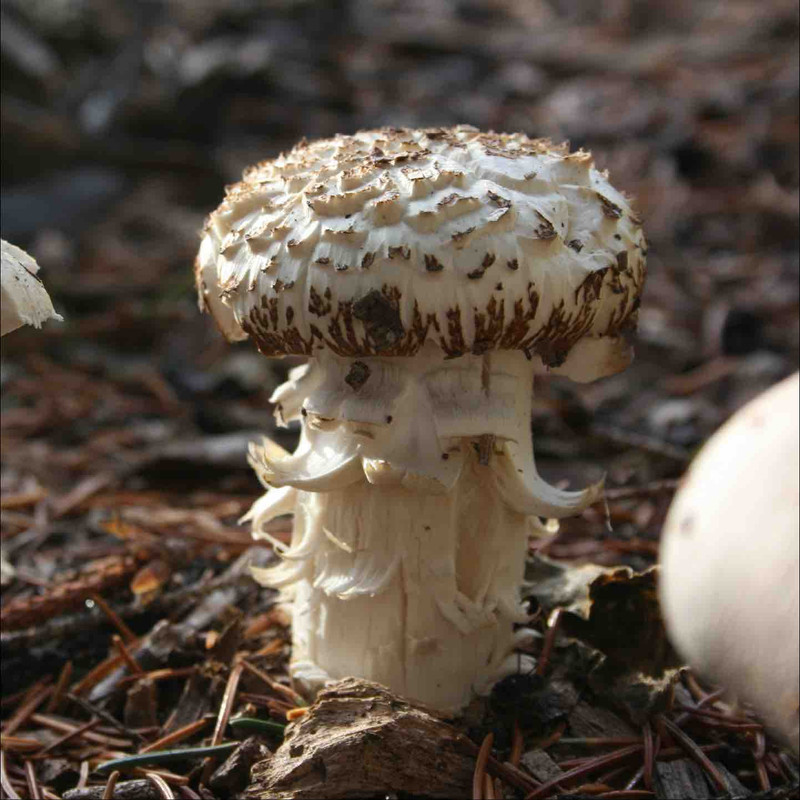In the spring and late fall, Wine Cap mushrooms can look different than expected. Just like spring and late fall Shiitake, Wine Caps can be freakish enough that people send us of photos of what they hope to be Wine Caps... but are just not quite sure.
Why do my Wine Cap Look...Weird?
More than any other time of the year, the spring season gives us the most unusual looking Wine Caps. Why it happens: Most of this variability in appearance is caused by spring's wild swings in temperature, low humidity and vigorous exposure to winds (and the fact that there's limited vegetation available to shield developing mushrooms). Later in the summer, cooling evenings bring high humidity and also a pretty dramatic reduction in wind speed, which affect humidity from the knee down - creating ideal conditions for cap development.

When you know you've inoculated Wine Cap into wood chips or straw but are questioning the identity of the emerging mushrooms in your bed, check for other identifiable structures. The cap is usually the most variable but the stems and gills of the mushrooms will have a more standard appearance. To better identify mushrooms that do not look as you'd expect, make sure to lift up the entire mushroom, including the stem attachment to the soil, by digging deep into the wood chips, straw or soil.
If you are new to Wine Cap cultivation in ALL its seasons, you may find the information below to be helpful in confirming your harvest. If you ever have any questions about Wine Cap identification, please call us, or better yet, email us a photo, and we'll be glad to help you.


